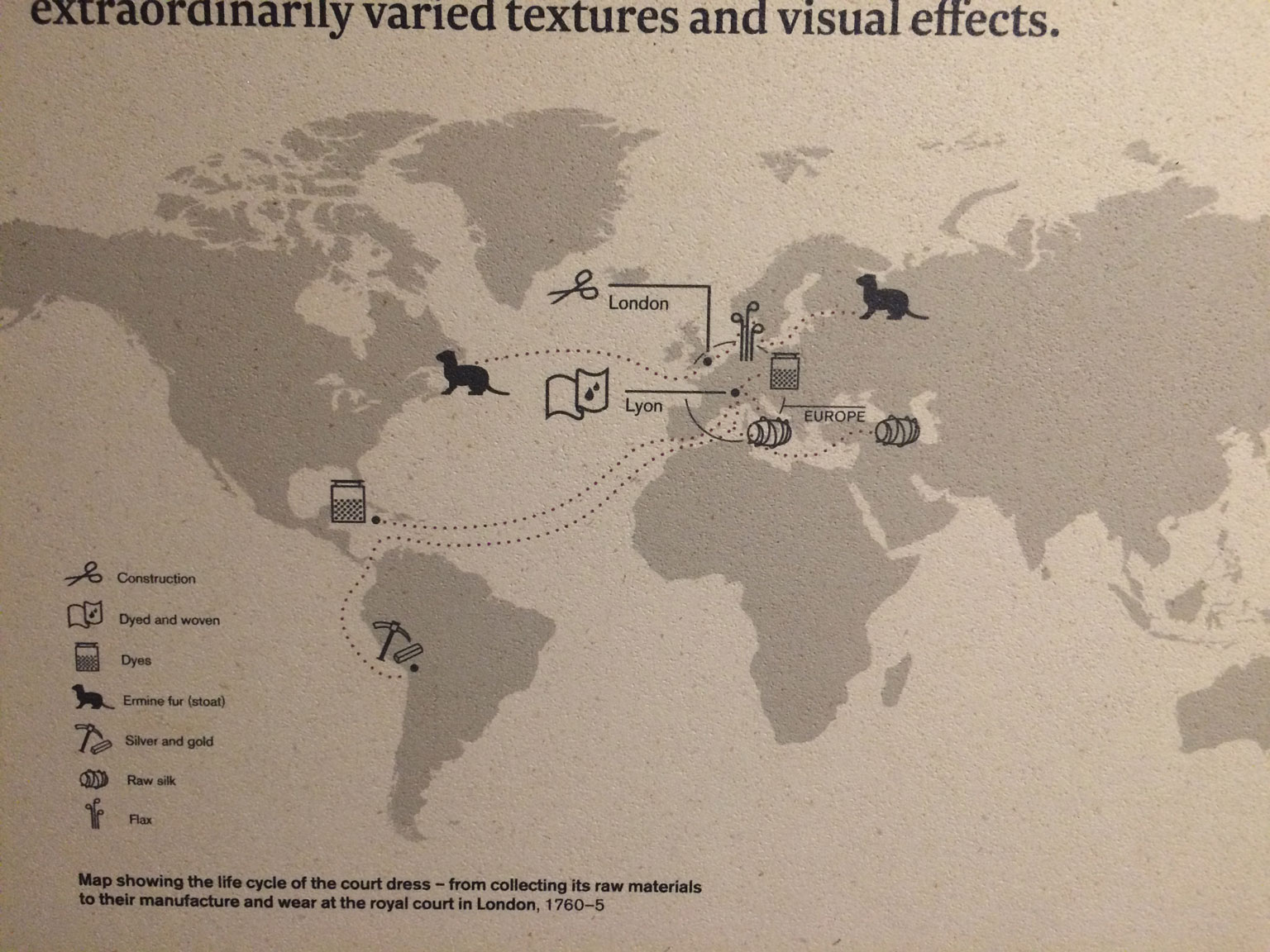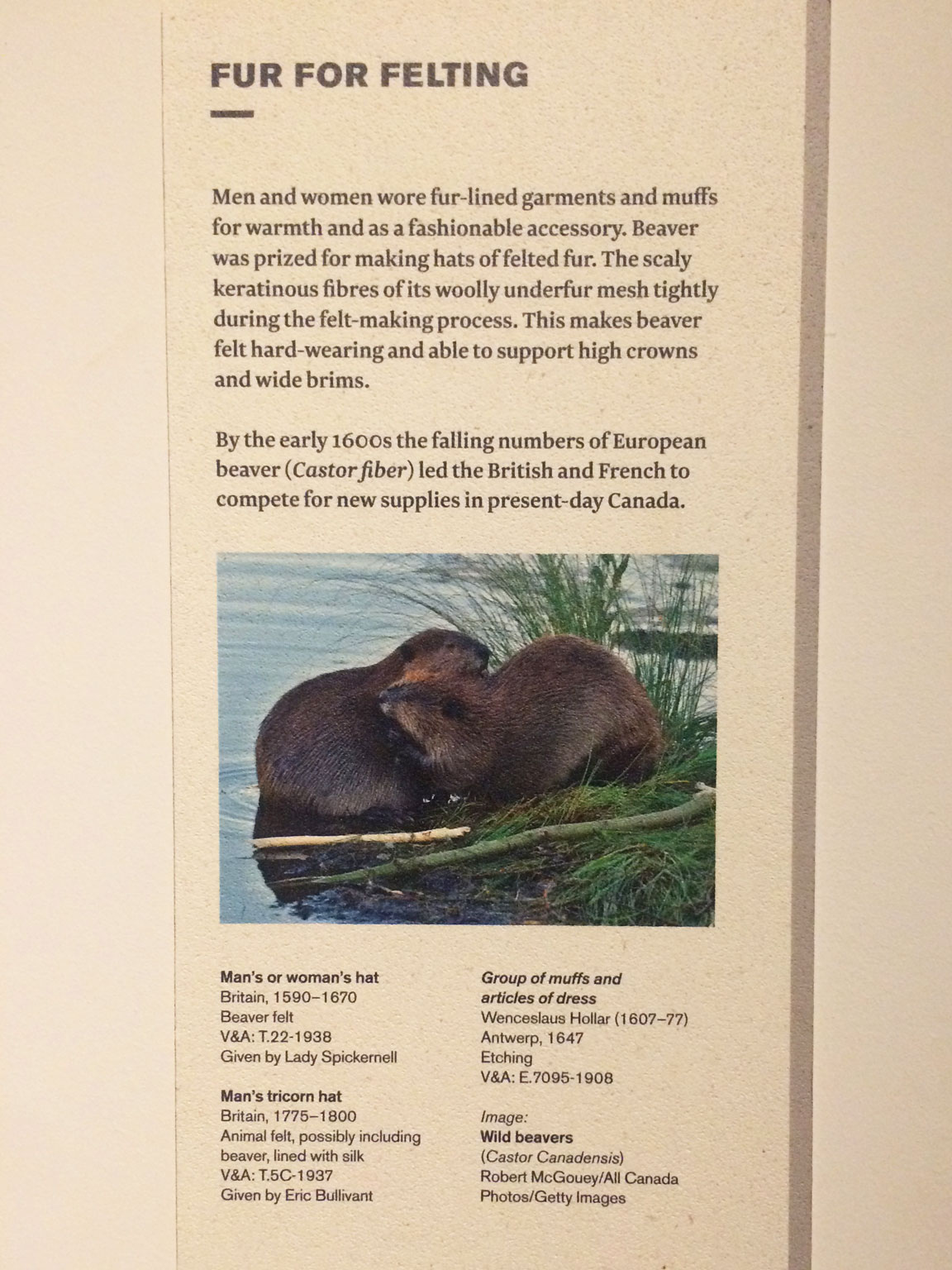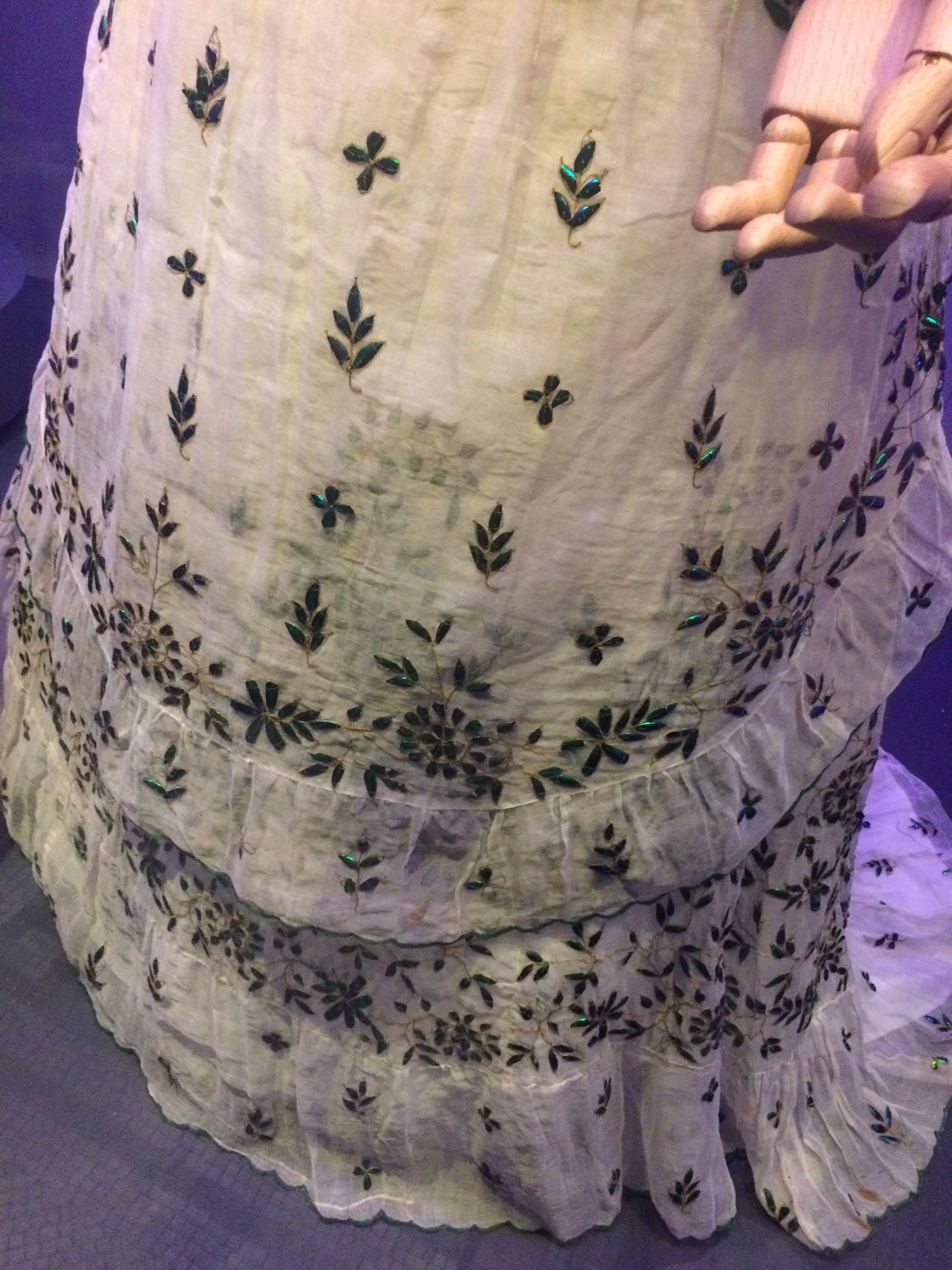Back in January I went to the Chanel exhibition at the V&A and it was really good. I’ve been to a few exhibitions at the V&A and I did enjoy this one. I actually didn’t know that much about Chanel’s fashions besides the obvious jacket and loose billowy trousers/loungewear she invented, so this was pretty eye-opening for me.
(disclaimer – I have not edited the below photos (as there are too many!) so apologies if they are a little wonky or badly lit.
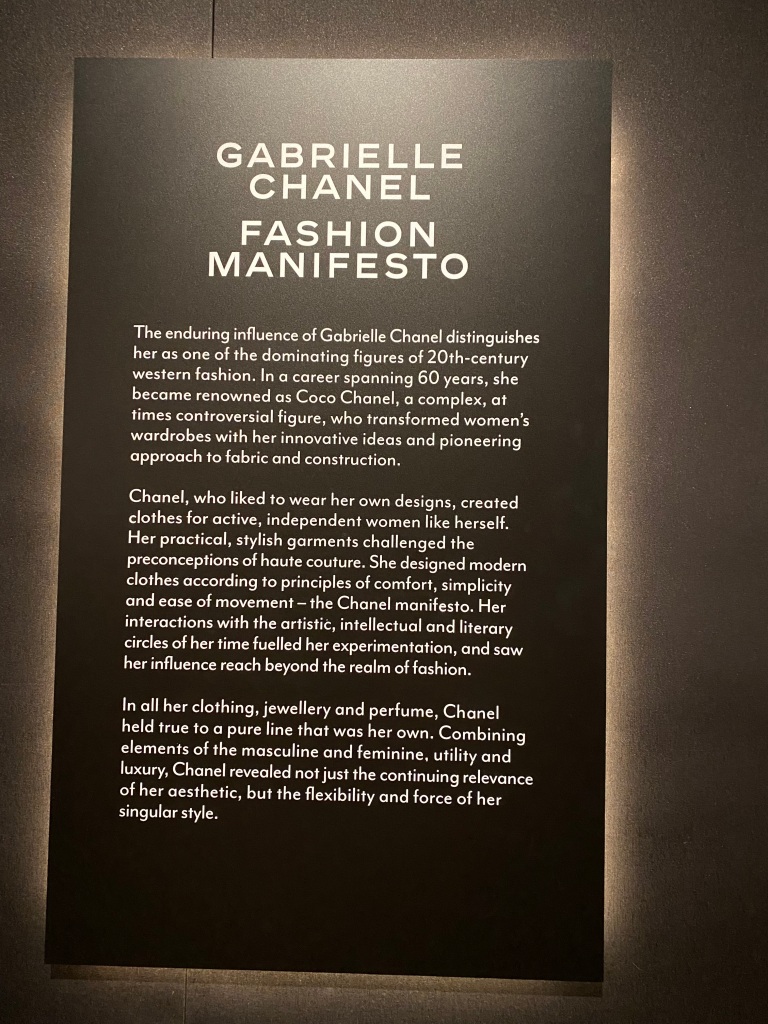
This is one of the earliest surviving Chanel garments, from 1916! It’s the Marinière Blouse and is made from fine-gauge silk jersey, a fabric that was previously used only for underwear.

This dress is from 1919, as necklines were starting to go down and hemlines up. I didn’t think that Chanel would have made such intricate and pretty clothes – goes to show what I knew going into the exhibition!


I was surprised and fascinated by all of the intricate seaming work on some of the clothes – like this criss-cross of seams across this dress. She also had a fairly neutral colour palette, even quite early on (but with some bright colours thrown in, as you’ll see). I love how the seam on the body follows into the seam onto the pocket!

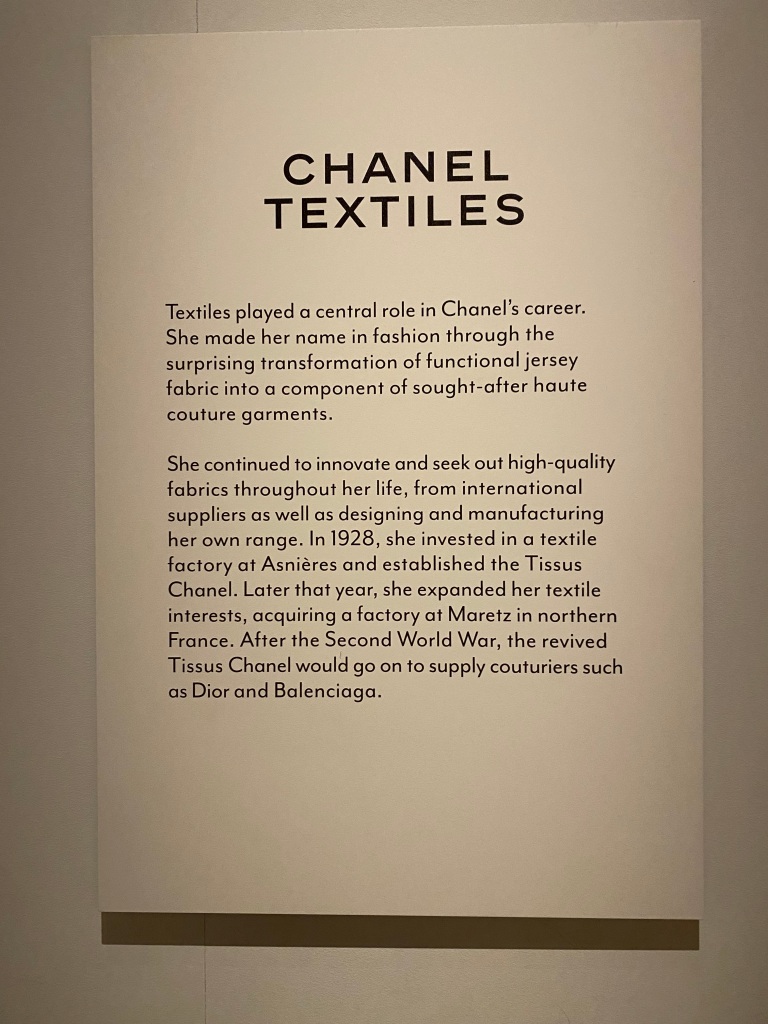
I love how she used the dress fabric on the coat lapels. And how the flowers have been cut out and sewn onto the neckline and hem of the dress.


And this dress had had flowers cut out and sewn on the top to make them 3D!

I don’t really wear dresses any more but I love this one, from 1934. I think the 30s was so glamourous, in a kind of effortless way, with the bias cut skirts etc.
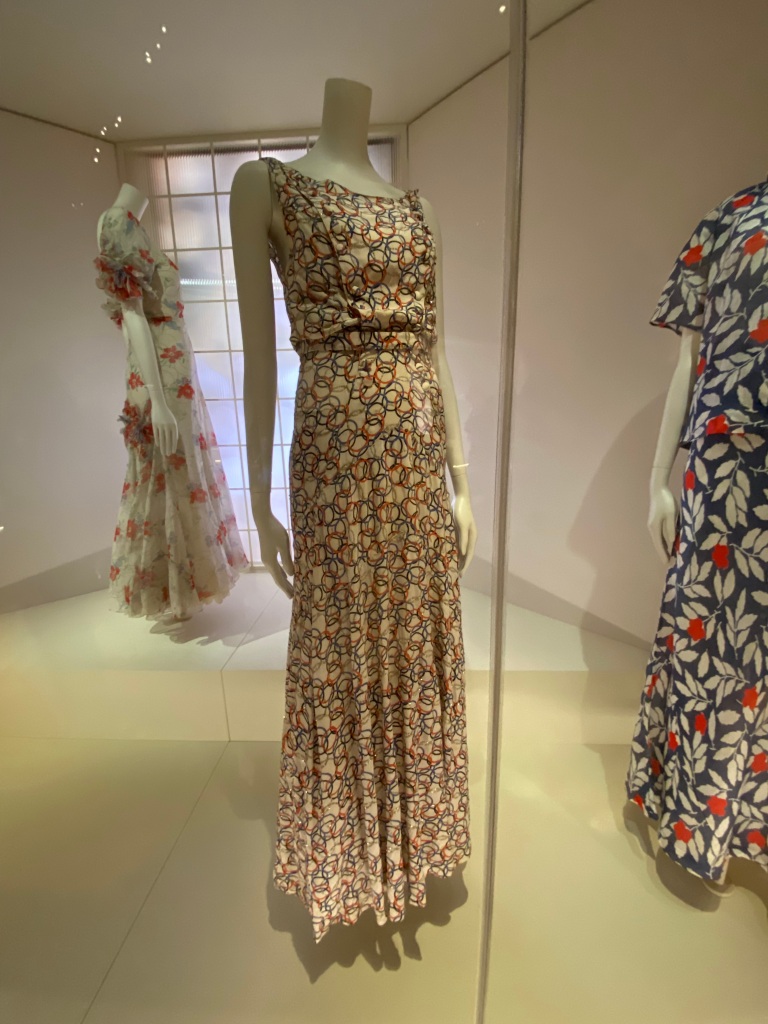
A relatively early wool suit, from 1924-5. This is the kind of vibe I expected from Chanel to be honest. Though of course it makes sense that she also did more glam stuff and evening wear – her clients needed outfits for all occasions presumably.

Chanel often used embroidery on her simple silhouettes. It’s very difficult to photograph black clothes in exhibitions but I did manage this close up of some embroidery on a black dress from 1923.

There was, of course, a room dedicated to Chanel’s perfumes. I love how the design of the bottles has never really changed! And I’m not gonna lie, I really want this travel set from 1936!

This selection of evening wear from the 30’s looks so floaty and swishy and cool. It makes me want to flounce around in them! I guess the only limitation of an exhibition like this is you can’t see the clothes worn by actual humans, or in motion.

This black beaded dress even mentioned that motion was key for Chanel. It’s a shame they couldn’t put a video of the dress in motion. I understand some of the garments might be too fragile to be worn, but it could have been gently shaken so we could see the beading shimmering in the light as it moved.
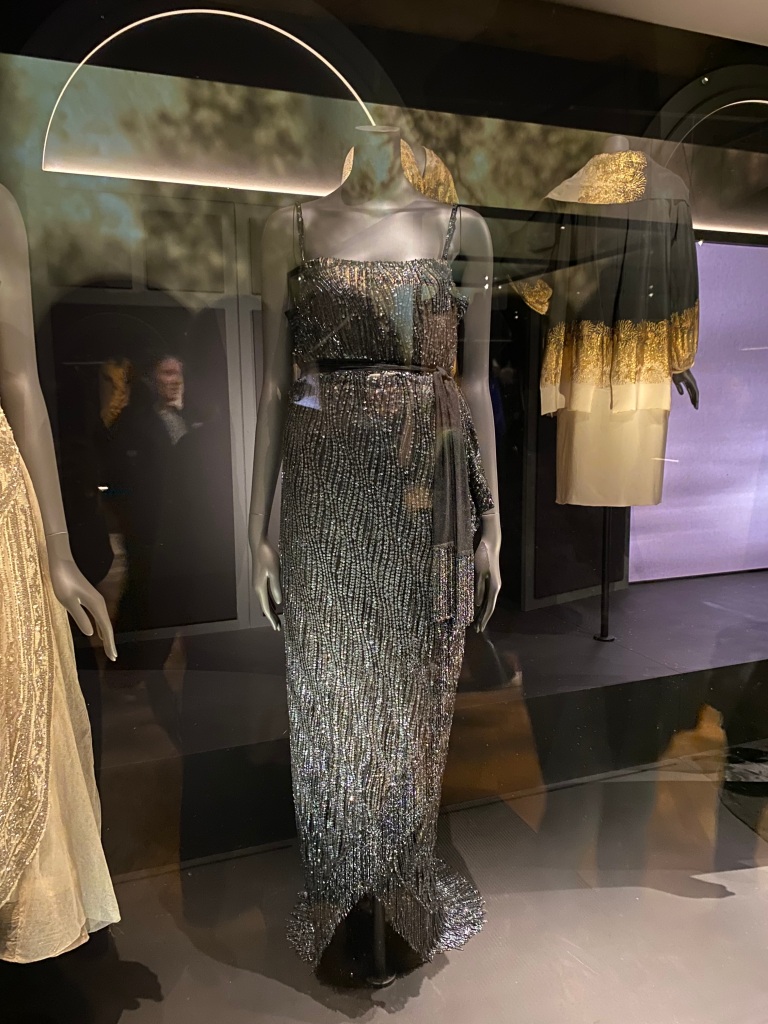

Another dress I would have liked to have seen in motion…
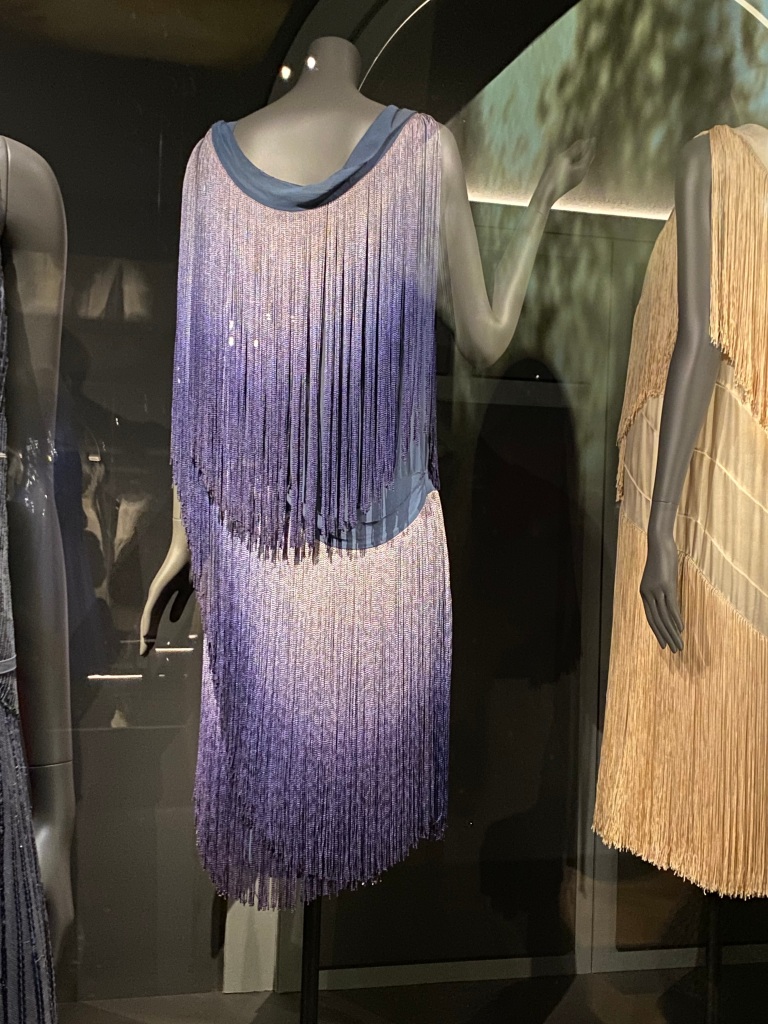
I did wonder how they would tackle Chanel’s less than stellar behaviour during the Second World War, but there was a room dedicated to her conduct. The exhibition was sort of chronological so it came after this room of 20’s and 30’s dresses, but before the room of suits (which obvs was thematic instead). There were documents and a lot of explanation of what she did during the war.
There was a whole room of Chanel suits (though I only took videos really, which I can’t upload here – I’ll share them to Instagram, if you follow me there). It wasn’t quite as impressive as the room of toiles in the Dior exhibition, but it was nice to see them side by side and to see how the design did subtly change over time. And I love the pink stands!

Who could forget about the Chanel bag! They’re not my cup of tea, but iconic nonetheless.

Quintessentially 60’s suits! It was interesting to see where in her career she maybe pushed the envelope and where, as later in her career, she was more following fashion’s trends and silhouettes. The 60’s seemed to be very shiny!

Chanel returned to black dresses throughout her career. I like this one with the gold stripes.

Of course, this trouser suit is definitely an outfit I would want to wear!

More shiny 60’s!

Shiny 60’s evening trouser suits! Just so shiny!
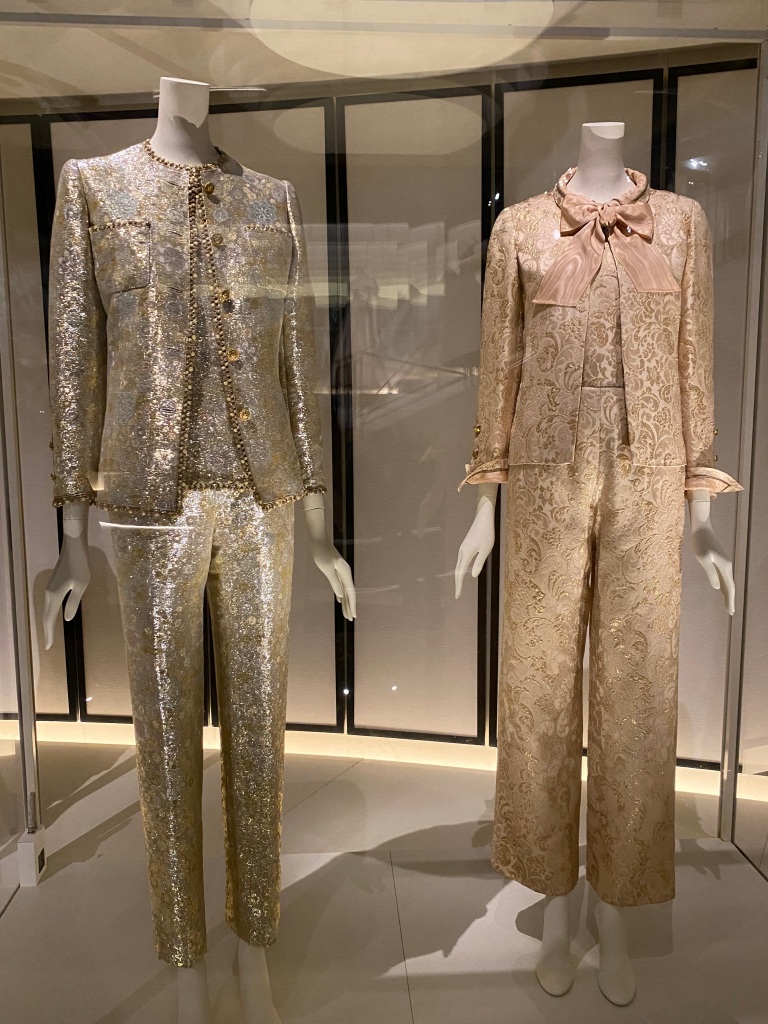
And a shiny dress from the 60’s. Apparently she was very into lamés – and it shows!

I kind of loved this massive pop of colour right at the end!
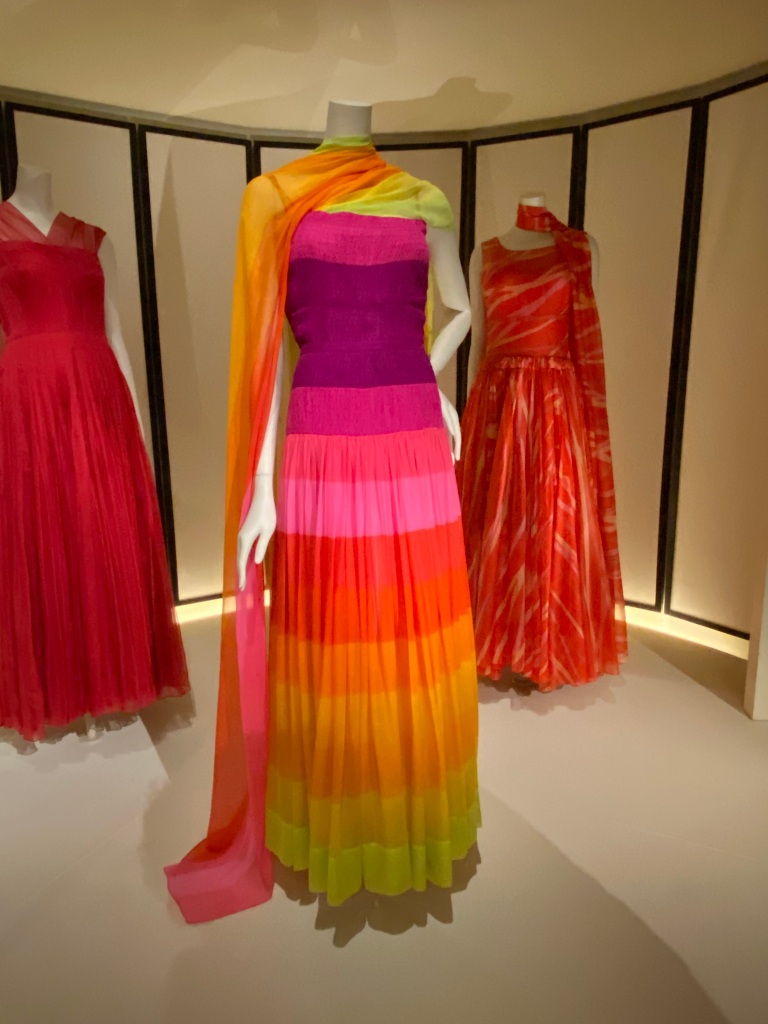
Overall I really enjoyed the exhibition – and I learnt a lot! I did buy the book too, so I’ve got plenty of reading material and inspiration still to come. I found myself marveling at how something was constructed or patterned, or at the hand beading work involved in some of the garments. I also felt like this was a good sized exhibition – I’m sure it’s sacrilegious to say so, but I felt the Dior one was a bit too big. I found myself overwhelmed by the end, but not with Chanel, it was just the right size.
Did you manage to see the exhibition before it closed? What did you think?























































